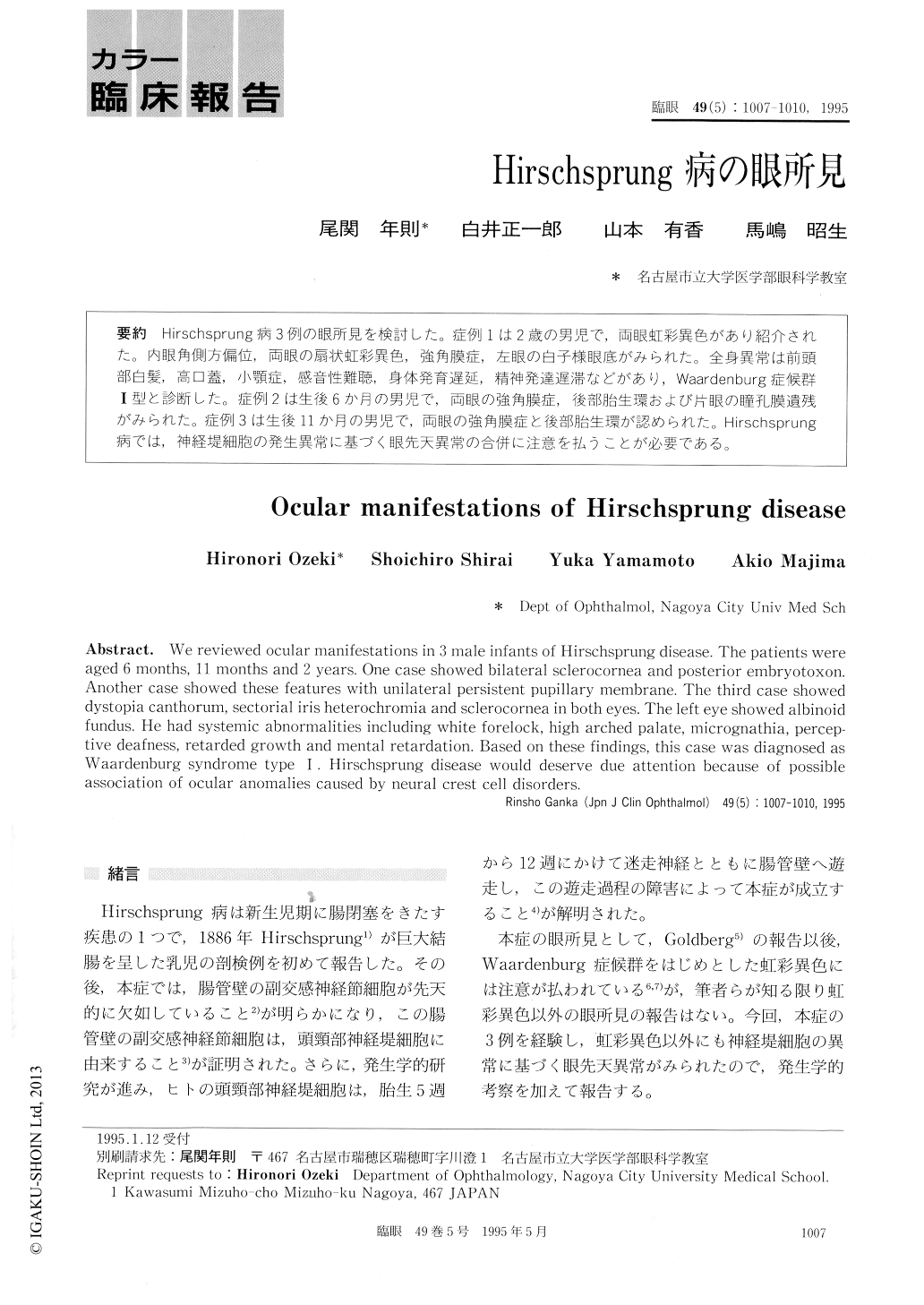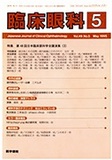Japanese
English
- 有料閲覧
- Abstract 文献概要
- 1ページ目 Look Inside
Hirschsprung病3例の眼所見を検討した。症例1は2歳の男児で,両眼虹彩異色があり紹介された。内眼角側方偏位,両眼の扇状虹彩異色,強角膜症,左眼の白子様眼底がみられた。全身異常は前頭部白髪,高口蓋,小顎症,感音性難聴,身体発育遅延,精神発達遅滞などがあり,Waardenburg症候群I型と診断した。症例2は生後6か月の男児で,両眼の強角膜症,後部胎生環および片眼の瞳孔膜遺残がみられた。症例3は生後11か月の男児で,両眼の強角膜症と後部胎生環が認められた。Hirschsprung病では,神経堤細胞の発生異常に基づく眼先天異常の合併に注意を払うことが必要である。
We reviewed ocular manifestations in 3 male infants of Hirschsprung disease. The patients were aged 6 months, 11 months and 2 years. One case showed bilateral sclerocornea and posterior embryotoxon. Another case showed these features with unilateral persistent pupillary membrane. The third case showed dystopia canthorum, sectorial iris heterochromia and sclerocornea in both eyes. The left eye showed albinoid fundus. He had systemic abnormalities including white forelock, high arched palate, micrognathia, percep-tive deafness, retarded growth and mental retardation. Based on these findings, this case was diagnosed as Waardenburg syndrome type I . Hirschsprung disease would deserve due attention because of possible association of ocular anomalies caused by neural crest cell disorders.

Copyright © 1995, Igaku-Shoin Ltd. All rights reserved.


